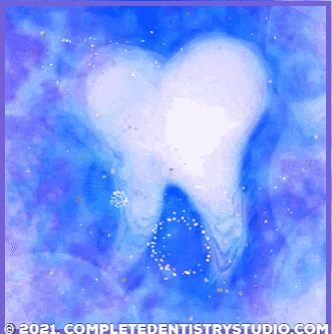Dr Skerpan: Last dental blog we covered the reasons WHY a tooth can "die-off". Remember, "endo-dontic" treatment involves the "INSIDE-of-the-TOOTH" (more on this treatment below). This internal treatment is needed if the inside pulp has died-off" from TOP-to-BOTTOM OR BOTTOM-to-TOP. "Endo-dontic" treatment should be performed in any scenario where the pulp is compromised. Keep in mind that more often than not, there are no warnings or any pain associated with a tooth needing "endo-dontic" treatment. Furthermore, very often x-rays do not show the extent of pulp-death from decay, fractures or traumas!
There is one other scenario where the tooth may require "endo-dontic" treatment --a situation where it may be necessary to intrude into the pulp deliberately. For example, it may become impossible to properly contour &/or treat a poorly-posi- tioned, poorly-shaped or over-extruded tooth. In such a case, the best option may be to perform "endo-dontic" treatment to obtain a healthier proper-function &/or a more aesthetic final result. MUSCLES: ' But WHY does "endo-dontic" treatment exactly "rescue" a tooth from an infection and abscess? ' Dr Skerpan: Remember that the pulp can not be repaired after it has "died-off"-- & that the dead-pulp-tissue is the "nidus" for the internal tooth infection. If such a pulp situation is not resolved, the infection will affect the bone at the root's apex, causing an infection & resorption ("eating-away") of the bone---also called a dento- alveolar abscess (or a "TOOTH-to-BONE infection").
MUSCLES: ' I "feel like digging" into HOW "endo-dontic" treatment is actually performed on the tooth. Can we "dig" into the actual "rescue" procedure itself? ' Dr Skerpan: From the previous dental blog we know WHY a tooth "dies-off" in the first place. And now we know WHY an "endo-dontically" treated tooth still can function in the jaw-bone & body! Understanding that there is no pulp left within a tooth after "endo-dontic" treatment, we now can "dig" into the Nitty-Gritties of HOW the actual procedure is performed to "rescue" a tooth (see our next dental blog).
0 Comments
|
Author
|






















 RSS Feed
RSS Feed